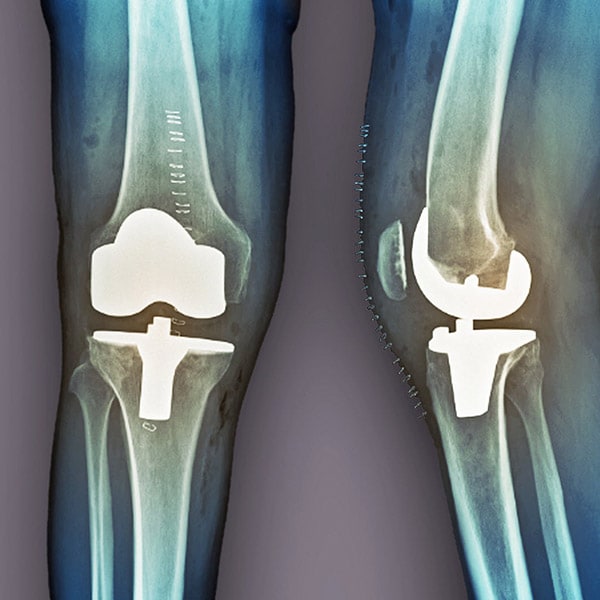Knee replacement is a surgical procedure to resurface the bones within the knee joint.
This involves removing the cartilage and some bone in the knee joint and replacing it with metal components that recreate the joint surface. A piece of polyethylene is then inserted between the metal surfaces to allow smooth gliding of the components.
Some surgeons may also remove the cartilage from the back of the patella and replace it with a polyethylene button.
How your prosthesis is selected
This may vary depending on your age, lifestyle, anatomy, the condition of your ligaments and the surgeon you use.
The Australian Orthopaedic Association National Joint Replacement Registry records the safety and effectiveness of all knee replacement prostheses. You can check if the prosthesis your surgeon is planning to use is associated with a higher-than-normal rate of ‘revision’ (when a surgery has to be redone because of complications).
Cost
The prosthesis won’t normally cost you anything. If you have private health insurance, your health fund pays. If you're a public patient Medicare pays.
HCF funds prostheses listed on the Federal Government’s approved prostheses list.
Learn more about the cost of knee replacement.

The components
A knee replacement prosthesis consists of three main components:
- the femoral component
- the tibial component
- the polyethylene spacer
Fixed bearing vs. rotating platform
Knee prostheses can be divided into two categories: fixed bearing or rotating platform.
With a fixed bearing prosthesis, the plastic (polyethylene) is fixed securely on the underlying tibial component. With a rotating platform prosthesis, the prosthesis can rotate slightly on the tibial component.
Benefits: The rotating platform prosthesis helps reproduce the small amount of rotation that a normal knee experiences when it's fully extended. There may also be less stress on the top of the plastic part where the femoral component bends. On the downside, rotating platform prostheses depend more on the strength of the surrounding ligaments and soft tissues to prevent dislocation.
Cruciate retaining vs. posterior stabilised
Another way of defining knee prostheses is by whether they are cruciate retaining or posterior stabilised.
Benefits: There are benefits to both types. Cruciate retaining prostheses require less bone to be removed while posterior stabilised prostheses are more often recommended when the wear on the joint is more advanced or when the surgery is being done because of complications following previous surgery (revision surgery).
Cemented vs. uncemented vs. hybrid
The third way to define knee prostheses is by how the metal components fix to the bone.
Most knee replacement systems use a quick setting cement to fix the metal components to the bone. A cementless, screwed system is also available. There is also a hybrid system (uncemented femur with cemented tibia and patella).
Benefits: No real benefits of one system over the other. There is only a small variation in the outcome of knee replacement related to the type of fixation used.
The patella button
In addition to replacing the main components of the joint, many surgeons also replace the underside of the kneecap or patella with a plastic button.
Benefits: A patella button can reduce the risk of pain from the kneecap but can also slightly increase the risk of complications following surgery.
It’s recommended that you discuss with your surgeon what type of prosthesis is going to be used and why. Print this page and take it with you when you discuss your procedure with your surgeon.







